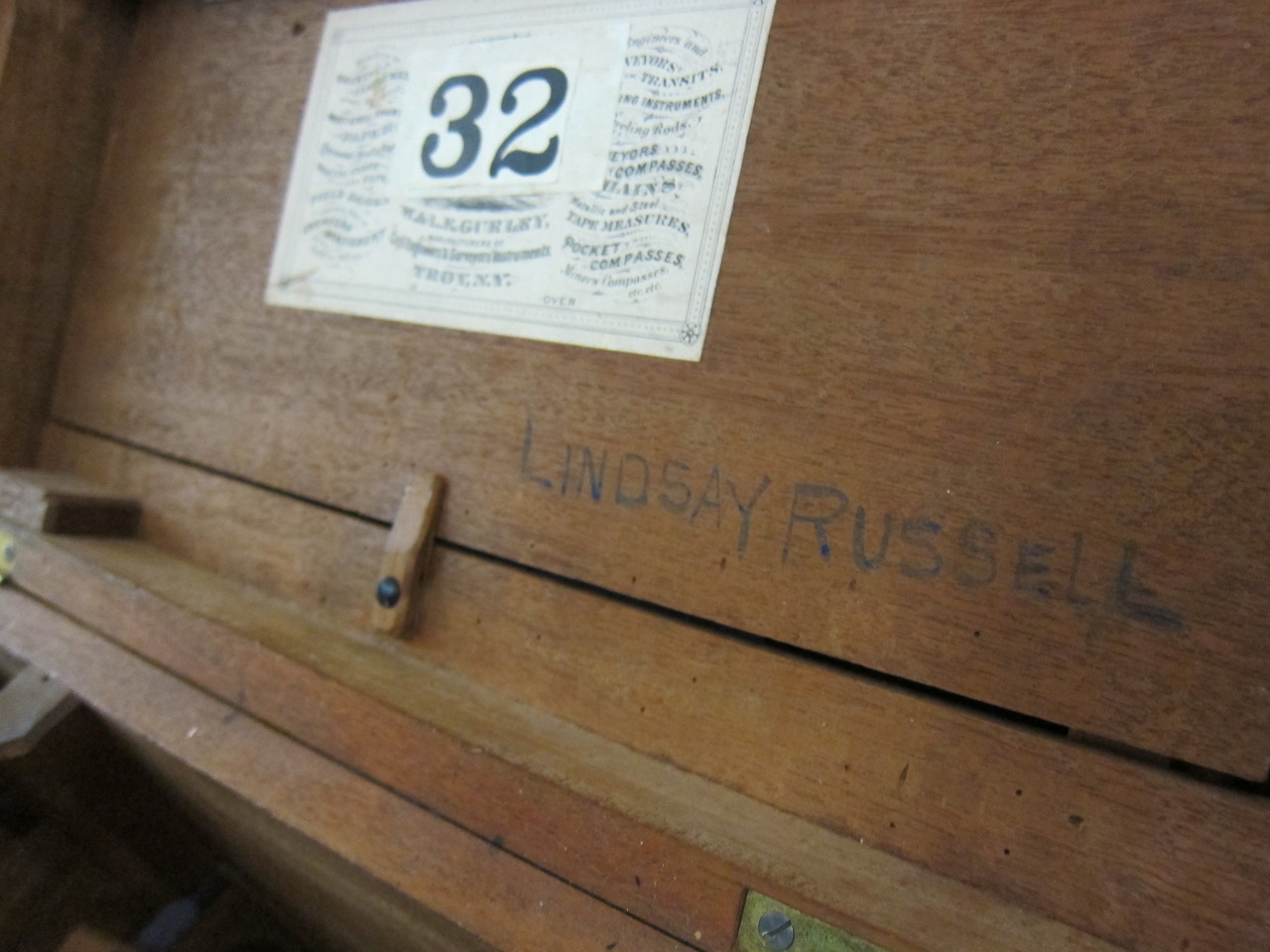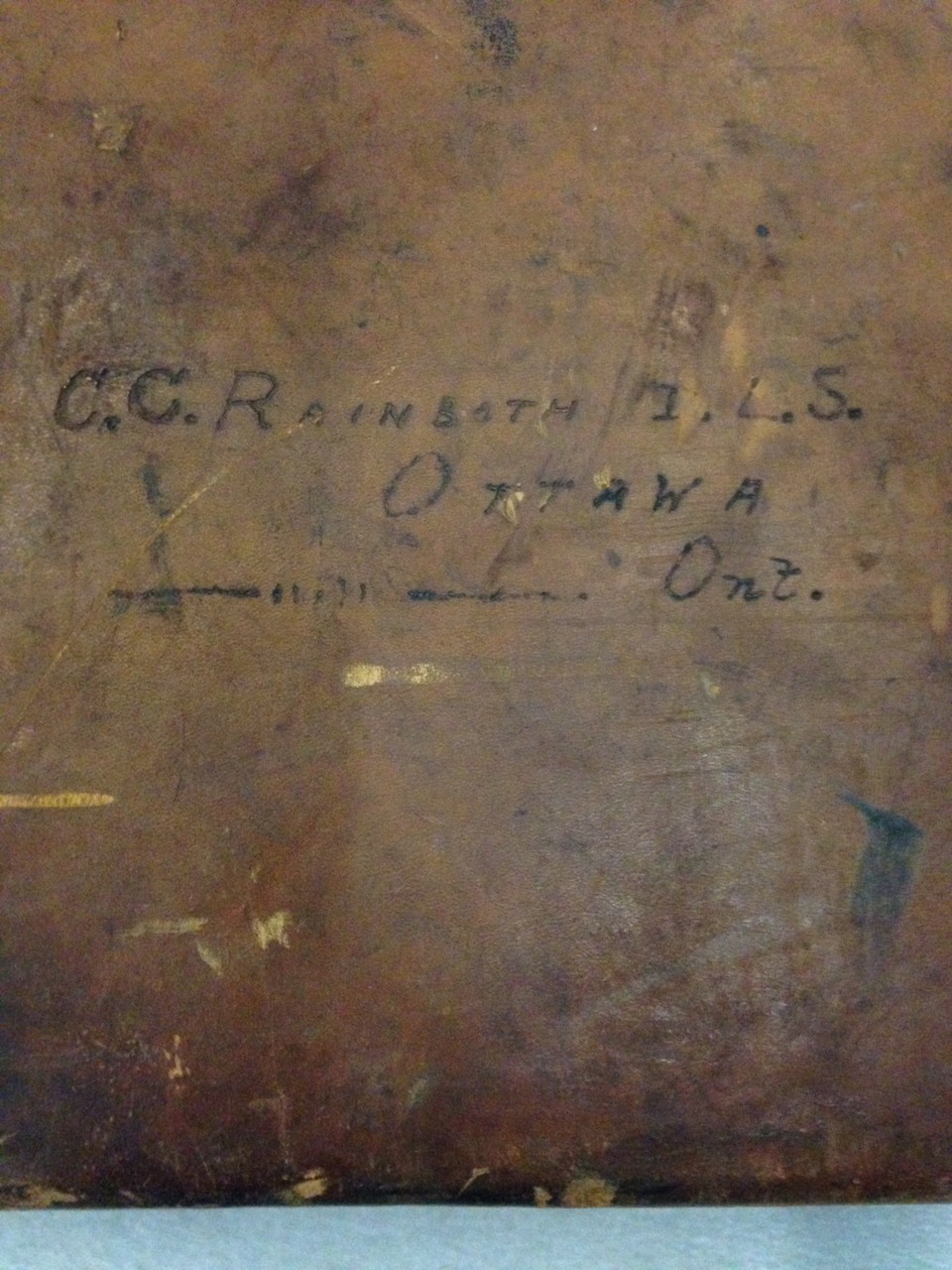Who owned It?
Carved onto the inside lid of the box that holds the solar compass, we see the name Lindsay Russell carved into it. Russell was a prominent figure in the Canadian Dominion land survey during the late 19th century. Towards the end of his career in 1884, Russell was the Surveyor General of Canada and the Dominion Lands and he achieved this position largely due to his work in mapping out townships from Manitoba to British Columbia. Russell mentions a solar compass, possibly even the one we see here, in several of his field journals and guide manuals for other surveyors. Although the compass looks like it would be used for initial surveys, Russell's guidelines show that they were actually used for the subdivision of townships through the meridian. Russell would have used the compass between 1877-1882, as that is when he did the majority of his surveying work.
Next up is G.C. Rainboth. Due to the years his journals were written, the assumption that he took on the solar compass after its use by Russell can be substantiated. Rainboth has recorded himself surveying through the 19th century, and one of his field journals from 1888 shows that a solar compass was likely in his team's collection of instruments. He worked in the prairies, but through examination of his field books, one can see that he worked in the Quebec Gatineau area in 1888. He did work with boundary lines and in New Brunswick, however analyzing the dates we see that this was done in 1908, whereas Carson took over the Compass in 1907.
The final user of the solar compass is P.A. Carson. A little known surveyor, he owned the compass in the early 20th century, as the photo indicates. He travelled with it to locations such as the Glacier National Park and Red Pheasant Reserve, as looking into his writings from those locales, he jots down what appears to be coordinates that would have been taken from a solar compass. The astronomical section of his field diary from Red Pheasant displays its use, as a solar compass must have been used to measure the time of star transit.


